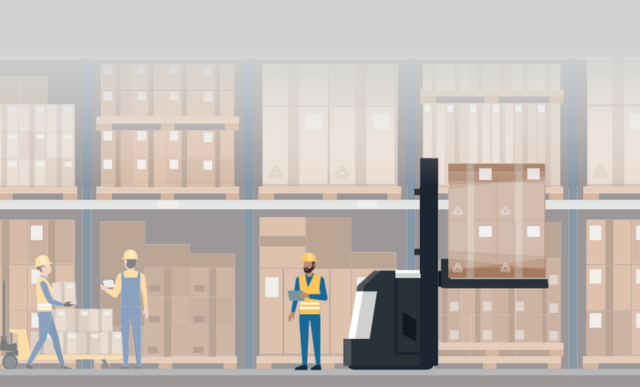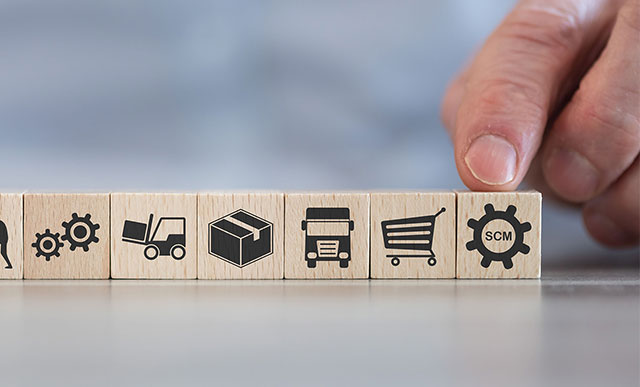The energy for supply chain transformation
Key Takeaways
⇨ Vestas is working on who major wind energy projects in Australia and one in Japan
⇨ SAP Business Network helps Vestas connect with contract manufacturers and suppliers to build wind turbines
⇨ Improved collaboration between buyers and suppliers mitigates supply chain disruptions
As a source of renewable energy, the wind energy sector is highly competitive, experiences rapid innovation, and is prone to massive supply chain issues. Manufacturers must source raw materials, manage global logistics operations, and mitigate the risks of supplier dependency while still keeping pace with demand. They also need to be confident that all the components in their turbines meet rigorous quality standards and deliver performance and reliability. Quality control issues can result in faults, repairs, and – at worst – major failures.
As a market leader in wind turbines, Vestas Wind Systems, headquartered in Aarhus, Denmark, launched a large-scale quality initiative. Its 29,000 employees in 88 countries develop wind energy projects worldwide and manufacture, install, and service the turbines for them. The 85,000 turbines Vestas has installed to date generated 173 gigawatts of electricity and over 151 gigawatts under service as of September 2023. Several newly commissioned major projects will see that output increase significantly in the coming years.
In Asia Pacific, Vestas is working on a 254MW Australian project for delivery in Q4 2024, a 46 MW repowering project at Eurus Kamaishi Wind Farm in Iwate prefecture, Japan and a 756MW project in Victoria, Australia. The Victorian project for the Golden Plains Wind Farm is set to be Vestas’ largest onshore wind farm in Asia Pacific. The Denmark-based global wind turbine giant also plans to start a construction plant in South Korea for core wind turbine equipment in 2024 as part of a $300 million investment plan.
Explore related questions
“Collaboration with suppliers and partners is of crucial importance to Vestas when it comes to creating a sustainable future for the world by leading the global demand for onshore and offshore wind energy,” Adeola Abegunde, director of Technology Area Lead Digital Procurement and Supply Chain at Vestas, says.
Sourcing Quality with SAP Business Network
Today’s wind turbines are made up of more than 10,000 individual parts. Since the companies that produce these parts are based all over the world, the supply chain is highly complex. To help manage this complexity, Vestas relies on SAP Business Network, the B2B platform used by millions of companies across 190 countries that can connect buyers with contract manufacturers and suppliers.
SAP Business Network enables Vestas to run all its procurement and supply chain collaboration processes online – even beyond company boundaries. Employees use its supply chain functions to collaborate on orders and subcontracting orders. When a supplier confirms an order and sends a shipping notification, staff at Vestas and its contract manufacturers see this information right away. Vestas employees therefore know whether raw materials or the components for an order will arrive at the contract manufacturer on time.
Projects of this scale need to run smoothly and according to plan. This is where the quality collaboration features in SAP Business Network come in. Before a supplier confirms or sends an order, it has to complete predefined quality tests and document them on the network. Vestas employees are then aware in advance of any quality issues further up the supply chain and can take corrective action. Through the network, employees can pass on changes to specifications if, for instance, one particular part had to be replaced sooner than expected and needs to be improved. If quality defects lead to incidents, the network can make these failures transparent to all partners and provide an audit trail. That helps everyone in the supply chain understand what went wrong and solve the problem.
“SAP Business Network allows Vestas to offer its trading partners a platform that makes all sorts of collaboration scenarios transparent from end to end. This means that Vestas is better able to mitigate the impact of disruptions in its global supply chain, making it more robust, future-proof, and sustainable,” Florian Seebauer, senior director of the SAP Business Network unit at SAP, says.
Reducing Supply Chain Friction
Suppliers also benefit from the network’s forecasting capabilities. Vestas can provide them with information from the planning tool so that they can prepare for changes and capacity increases. This helps suppliers plan more accurately and can minimize friction losses in the supply chain.
SAP Business Network also supports Vestas’ sustainability goals since it allows users to select and rate suppliers by sustainability criteria. When compared to electricity generated from fossil fuels, Vestas’ solutions have saved 1.9 billion tons of carbon emissions – equivalent to 88 million cars driven for a year. Vestas has established sustainability performance as a core priority across its entire value chain and introduced pioneering initiatives such as its “Circularity Road Map” for the circular economy. It is no surprise then that Vestas is ranked as one of the world’s most sustainable companies, featured regularly at the top of lists such as Corporate Knights 100.
Hear Adeola tell the Vestas story first hand at Connect 2024
Join us and other Enterprise Asset Management and Supply Chain Management professionals on 11-12 November at Royal Pines, Gold Coast to hear the latest from SAP end-users on the hot topics that matter today – book now!








